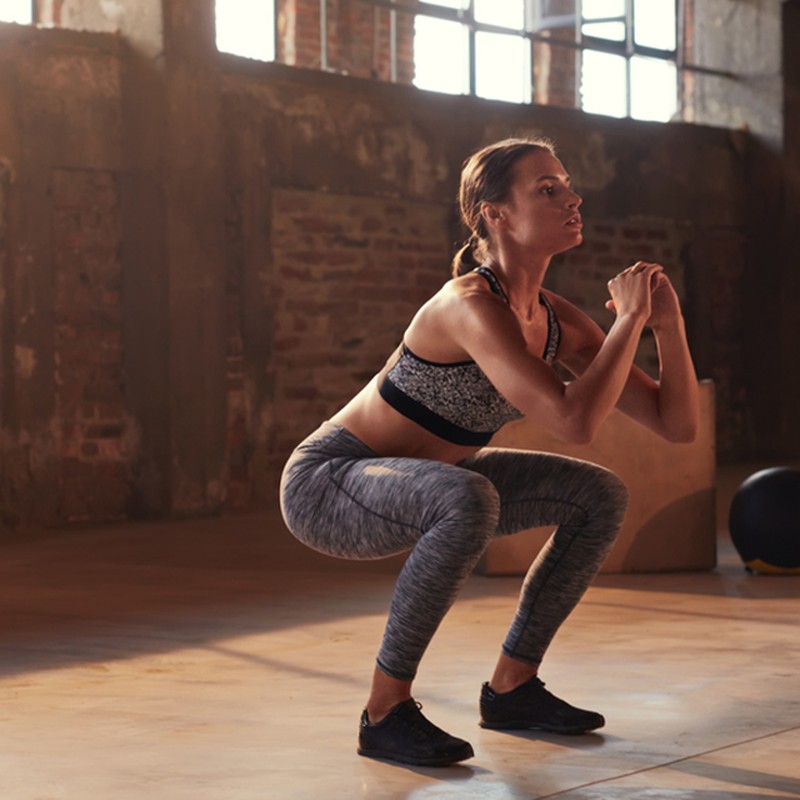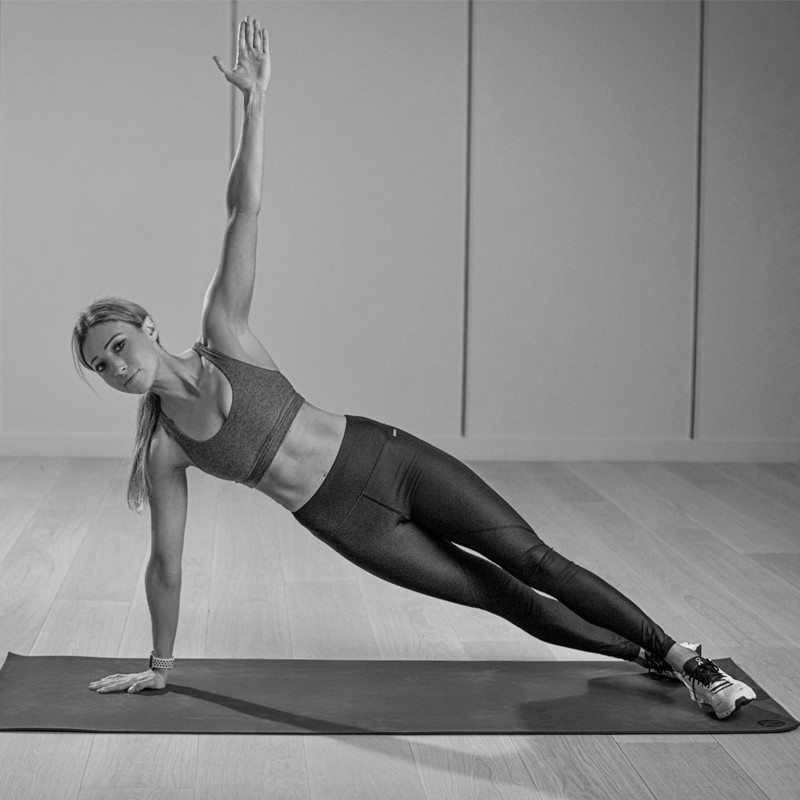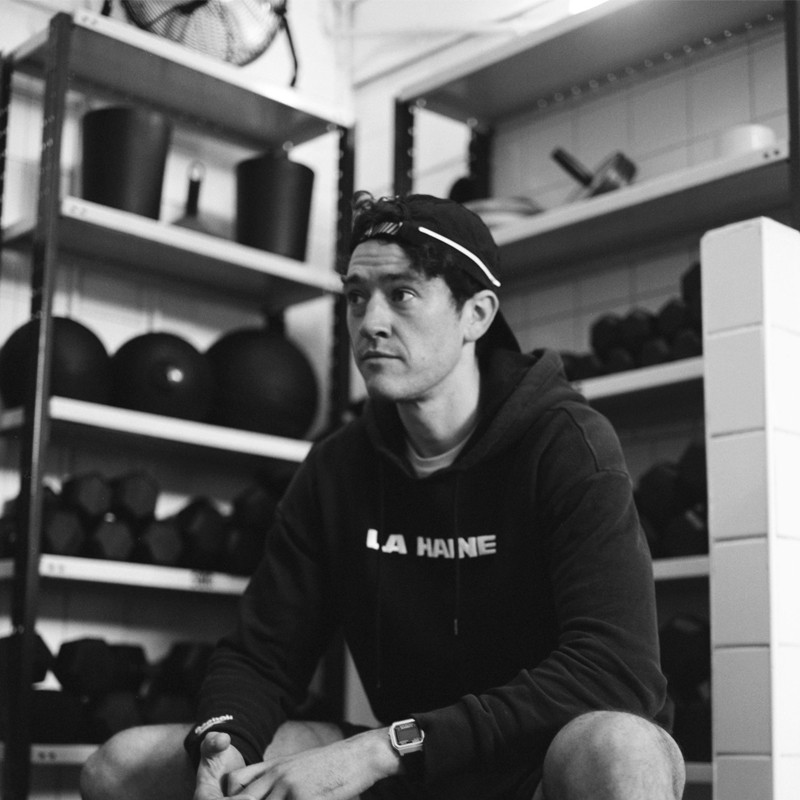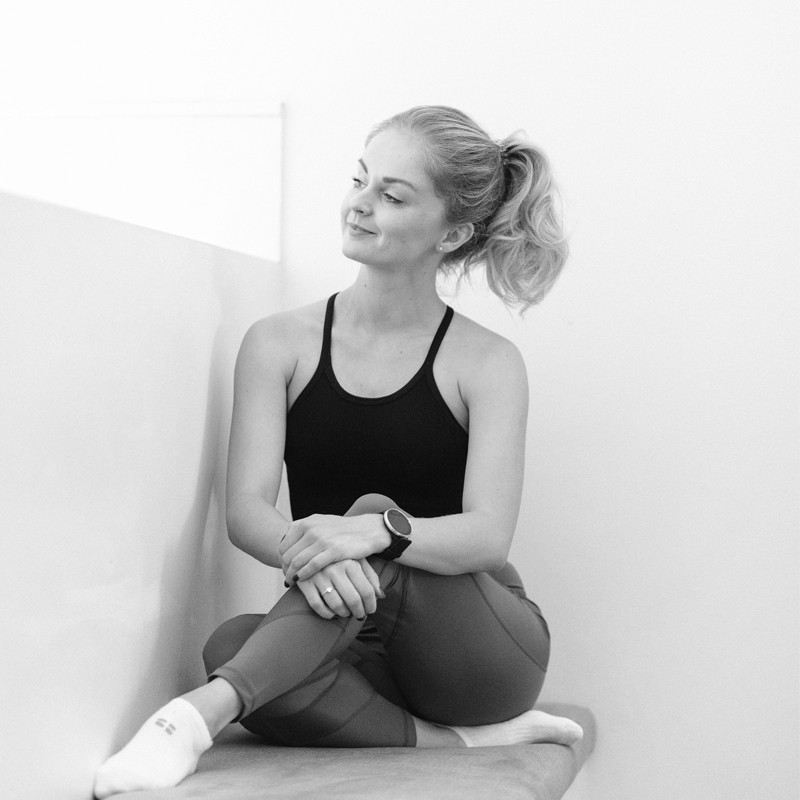11 Common Fitness Mistakes & How To Correct Them
Lucie Cowan
Master Trainer at Third Space
An Ineffective Warm-Up
“Forget running on a treadmill – a proper warm-up should accomplish more than raising your core temperature and getting a sweat on through light cardio. Instead, spend ten minutes doing mobility drills. Try a high plank walk out, slowly rolling through the spine as you stand up each time, a simple cat cow stretch for the spine, or a few downward dogs working through to an upward-facing dog to encourage blood flow in the quads, hips and upper body. Just don’t confuse mobility with flexibility or stretching – it’s so much more than that. Stretching involves lengthening your muscles, while mobility optimises movement. When you’re more mobile, you can train harder, perform better and recover faster.”
Only Doing Cardio
“I see so many women doing cardio day in, day out, without ever adding strength training into their programme. This may initially appear to give you the results you’re after, although over time, the body quickly acclimatises, and injuries can creep in. Forget the myth that strength training makes you bulky – this fear is the equivalent of accidentally becoming a millionaire through doing well at work. Strength training – whether it’s via your own bodyweight, a pair of dumbbells, a resistance band or kettlebell – will boost metabolism, reduce inflammation and improve posture. It'll also improve your performance in other sports – for example, if you’re a runner, your posture will get better. Try to do as many strength sessions per week as cardio, and never do more cardio than weights.”
Forgetting About The Core
“If I had a pound for every time a client complained to me about lower back pain after a strength training session, I’d be a rich PT. Nearly every exercise, when performed correctly, will incorporate your core in some shape or form. If you are suffering with lower back pain, this is a clear sign you are not properly engaging your core when you exercise. Sound familiar? Get into the habit of performing a set of dead bugs before you start exercising. When you move on to your workout, keep your core braced throughout every rep, imagining someone is about to punch you in the stomach. Incorporating these habits will supercharge each movement and will ultimately be far more effective than endless crunches.”
Not Resting Enough
“I see so many people with overuse injuries because they’re training frequently and aren’t allowing time for muscles to replenish and get stronger. If you don’t factor rest days into your week, your performance will ultimately suffer. Rest days allow both body and mind to recover from the stress of training, so you’ll be better placed to make the next workout count than if you skip the recovery period. Plus, muscle is developed in its ‘repair phase’ when you’re resting and refuelling, not when you’re training. The more intense your training, the more rest you need. Listen to your body, and aim to take up to three rest days a week if you’re training frequently.”
Follow @LucieXCX
Ed Conway
Founder of FIT AS
Not Having A Goal In Mind
“Not having a plan of action when you head into the gym means your workout will lack structure. Get clear and specific about what you want to achieve, and avoid copying the person next to you. If in doubt, stick to a full-body session. If you’re not entirely sure what you want to focus on, a workout that covers all muscle groups is great for overall gains and means you won’t get blinkered into solely working on one muscle group.”
Struggling With Mountain Climbers
“Whether you’re doing a HIIT or cardio session, a mountain climber is likely to make an appearance at some stage. However, I often see people losing their form as they fatigue. The correct way to do a mountain climber is to have your hands shoulder width apart in a plank position, with your chest directly above and your knees driving forward. As you tire, it’s easy to want to pike upwards into a downward dog position, but this renders the move useless. If you find yourself tiring, hold this ‘pike’ for a few seconds to recover and then go back into the move with the correct form.”
Not Breathing Properly
“Using your breath is integral to any exercise, but it’s particularly ignored in a press-up. If you’re struggling to do a press-up, don’t hesitate to do a box press-up on your knees – it’s far safer and more effective to do an exercise that works for your body. Also, make sure you’re not holding your breath during a press-up – always breathe in as you lower your body and breathe out as you press back into the starting position.”
Forgetting To Cool Down
“Unless you enjoy the feeling of sore, achy muscles in the days following a workout, always remember to cool down. Stretching at the end of a workout – even for just five minutes – will reduce delayed onset muscle soreness (DOMS), prevent injury and increase flexibility and mobility for future workouts. Just ensure your post-workout stretches are static and hold each one for at least 30 seconds to a minute to work into the muscle. Always be specific in your stretches, too. For example, if you’ve done a lower-body workout, try exercises that target the lower body, such as pigeon pose, and quad and hamstring stretches. These will help you feel supple so you don’t suffer the following day.”
Visit FitAs-CK.com
Charlotte Tooth
Founder Of Body Bond Online
Not Finding Balance
“After 13 years of advising women on exercise and health, I’ve noticed a Marmite effect with regards to cardio and strength. So many women love one and hate the other and struggle to strike a balance between the two. Our genetics and habits tend to play a role in our likes and dislikes, and we tend to lean into what we are good at, but this isn’t always the best option for your health. Cardio and strength work best hand in hand, and ideally in separate sessions. Don’t run on the treadmill for 30 minutes and then expect to be able to lift heavy weights – separate your days for the best results.”
Not Syncing With Your Cycle
“Many women fail to consider the impact their fluctuating hormones have on training. Exercising with your menstrual cycle in mind can make a huge difference to how you feel when you exercise and the results at the end. Get into the habit of utilising awareness of your changing hormones and their patterns to support and enhance your training. Knowing you get a dip just before your period can help you plan for a lower-impact session (or skip it entirely), instead of chasing a PB on that day. It can also help you to be more forgiving on the days when you don’t manage to stick to a plan.”
Wearing The Wrong Trainers
“Your feet are the gateway to your posture, but many of us are getting it wrong. There’s a trend at the moment for trainers with a raised heel at the back, a convex shape on the sole or a narrowing at the front, which causes real issues for foot function. This will ultimately take a toll on the ankle, knee and hip joints. If you are lifting weights, consider barefoot trainers, which are a great way to encourage the foot to function optimally.”
Visit BodyBondOnline.com
DISCLAIMER: Features published by SheerLuxe are not intended to treat, diagnose, cure or prevent any disease. Always seek the advice of your GP or another qualified healthcare provider for any questions you have regarding a medical condition, and before undertaking any diet, exercise or other health-related programme.
DISCLAIMER: We endeavour to always credit the correct original source of every image we use. If you think a credit may be incorrect, please contact us at info@sheerluxe.com.






